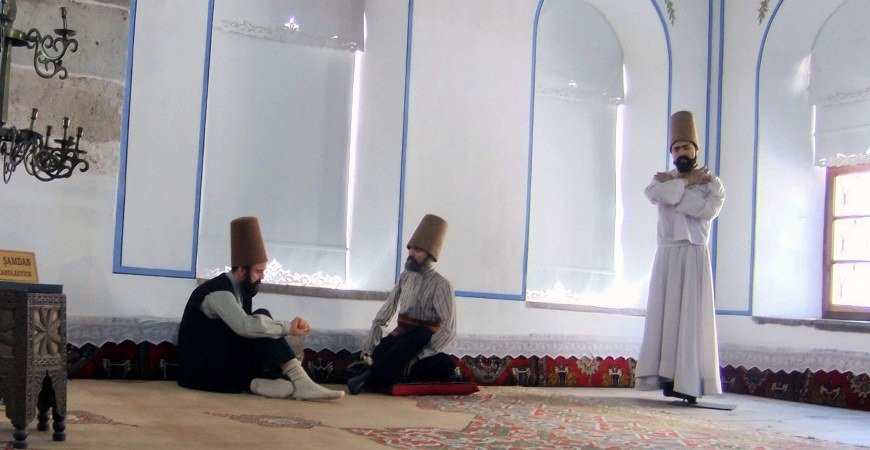
Konya Mevlana Museum in Konya Turkey – Chapter 4
Konya Mevlana Museum – Chapter 4,
Semahane: The Semahane is to the north of the Green Dome. It was built during the reign of Sultan Suleyman the Law Giver (or Magnificent) in the XVI century at the same time as the adjoining Merced and is a domed hall. The Semahane is the place where the Mevlevi dervishes do their ceremonial dance called the Sema. It contains enclosed areas both below and above, for male and female visitors, a platform where poems in praise of Mohammad or asking his intercession (Naat) are read, and a special area for musicians called the My trip Recess. Today musical instruments, lecterns, candlesticks, lamps and Milana’s clothes are exhibited in the Semahane.
Mescid: The small mosque of the Dargah, the Merced, adjoins to the west side of the Semahane. The main gate to the Merced opens onto the Dargah courtyard. The Merced has a single balconies minaret and a marble sanctuary. In showcases in the Mescid are exhibited illuminated manuscripts, kilims, and carpets.
Dervish Cells: The Dervish Cells were built in 1584 by Sultan Murad III for the Mevlevi dervishes to live in. Each of the cells, Which is to the west side of the tomb have a small dome and a chimney. The courtyard side of the cells has been closed off with a glass corridor. Today the first two have been preserved in their original state, while the others are used as the “Carpet and Cloth Pavillion”, where Seljuk-Ottoman carpets and Ottoman period cloth is woven in Istanbul, Bursa and Bilecik are exhibited.
Mevlevi Kitchen: The Dargah Kitchen is south of the dervish cells. The kitchen was enlarged during the reign of Murad III and last repaired in 1867.
You can continue to find more details fort he Konya Mevlana Museum in Chapter 5.